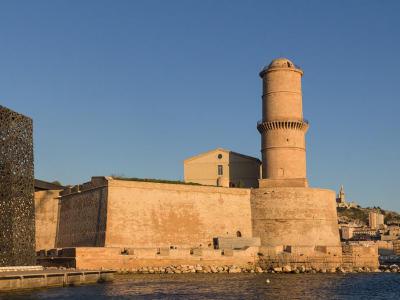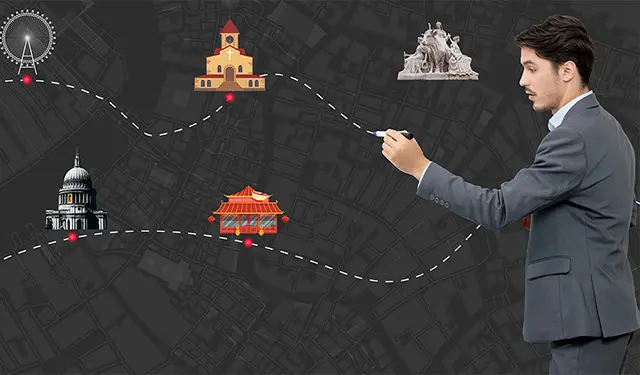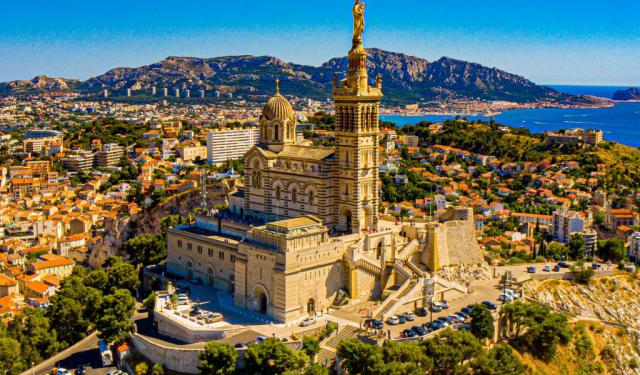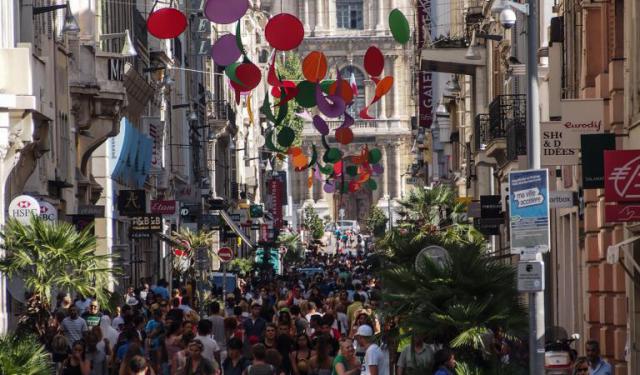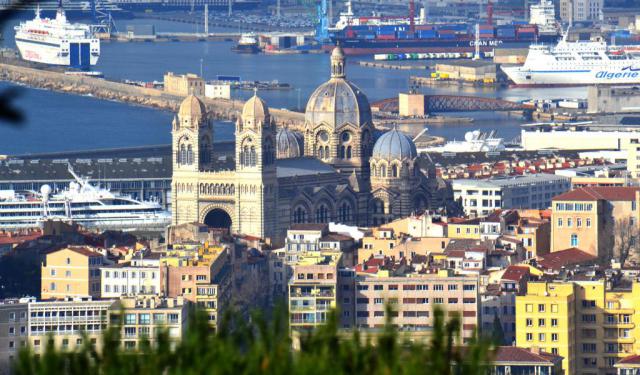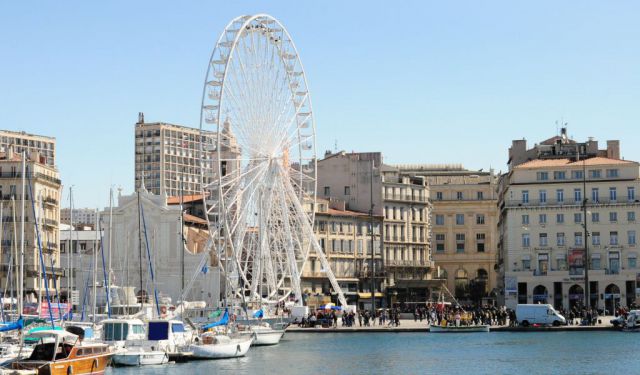Fort Saint-Jean, Marseille
Fort Saint-Jean, established in 1660 by king Louis XIV, is one of Marseille’s most formidable fortifications. Its construction incorporated two earlier structures: the 12th-century Commandery of the Knights Hospitaller of Saint John of Jerusalem, which once served as a monastic hospice during the Crusades, and the 15th-century tower of René I, King of Provence.
In April 1790, Fort Saint-Jean was seized by a revolutionary mob that executed the commander of the royal garrison. During the French Revolution, the fort was converted into a prison and held several prominent figures, including Louis Philippe II, Duke of Orléans, and his sons Louis-Charles, Count of Beaujolais, and Antoine Philippe, Duke of Montpensier. Following Robespierre’s downfall in 1794, around one hundred Jacobin prisoners—members of a radical political faction during the Revolution—detained in the fort were brutally massacred.
Throughout the 19th and early 20th centuries, Fort Saint-Jean remained under the control of the French Army, serving as both a barracks and a clearing station for troops bound for North Africa. During World War II, it was occupied by German forces, and in August 1944, as Marseille was liberated, a massive ammunition explosion devastated much of the fort’s historic structure.
Recognized as a Historic Monument in 1964, Fort Saint-Jean underwent extensive reconstruction between 1967 and 1971. Today, it forms part of the Museum of European and Mediterranean Civilizations complex.
In April 1790, Fort Saint-Jean was seized by a revolutionary mob that executed the commander of the royal garrison. During the French Revolution, the fort was converted into a prison and held several prominent figures, including Louis Philippe II, Duke of Orléans, and his sons Louis-Charles, Count of Beaujolais, and Antoine Philippe, Duke of Montpensier. Following Robespierre’s downfall in 1794, around one hundred Jacobin prisoners—members of a radical political faction during the Revolution—detained in the fort were brutally massacred.
Throughout the 19th and early 20th centuries, Fort Saint-Jean remained under the control of the French Army, serving as both a barracks and a clearing station for troops bound for North Africa. During World War II, it was occupied by German forces, and in August 1944, as Marseille was liberated, a massive ammunition explosion devastated much of the fort’s historic structure.
Recognized as a Historic Monument in 1964, Fort Saint-Jean underwent extensive reconstruction between 1967 and 1971. Today, it forms part of the Museum of European and Mediterranean Civilizations complex.
Want to visit this sight? Check out these Self-Guided Walking Tours in Marseille. Alternatively, you can download the mobile app "GPSmyCity: Walks in 1K+ Cities" from Apple App Store or Google Play Store. The app turns your mobile device to a personal tour guide and it works offline, so no data plan is needed when traveling abroad.
Fort Saint-Jean on Map
Sight Name: Fort Saint-Jean
Sight Location: Marseille, France (See walking tours in Marseille)
Sight Type: Attraction/Landmark
Guide(s) Containing This Sight:
Sight Location: Marseille, France (See walking tours in Marseille)
Sight Type: Attraction/Landmark
Guide(s) Containing This Sight:
Walking Tours in Marseille, France
Create Your Own Walk in Marseille
Creating your own self-guided walk in Marseille is easy and fun. Choose the city attractions that you want to see and a walk route map will be created just for you. You can even set your hotel as the start point of the walk.
Historical Churches Walking Tour
Marseille's religious scene, albeit diverse, is dominated by Christianity. The Christian presence in the city dates back to ancient times, making it an integral part of local identity. The vibrant Mediterranean port city also has been a significant pilgrimage destination.
The majority of Christians in Marseille are Roman Catholics, whose prevalence is manifested in the form of multiple... view more
Tour Duration: 2 Hour(s)
Travel Distance: 3.6 Km or 2.2 Miles
The majority of Christians in Marseille are Roman Catholics, whose prevalence is manifested in the form of multiple... view more
Tour Duration: 2 Hour(s)
Travel Distance: 3.6 Km or 2.2 Miles
Food and Shopping Walk
Shopping in Marseille is a great way to mingle with the locals and immerse in new tastes, scents and customs. As with so much else in this melting-pot of a city, the top-of-the-range stores here rub shoulders with the funky little boutiques, high-street chains with scruffy discount outlets or traditional family groceries and bakeries.
Marseille doesn't have a flagship thoroughfare as such,... view more
Tour Duration: 1 Hour(s)
Travel Distance: 1.8 Km or 1.1 Miles
Marseille doesn't have a flagship thoroughfare as such,... view more
Tour Duration: 1 Hour(s)
Travel Distance: 1.8 Km or 1.1 Miles
Marseille Introduction Walking Tour
Alexandre Dumas, the celebrated French novelist, once wrote: “It was in Marseille that I learned the sea can lead anywhere”.
Marseille, set along the sparkling Mediterranean, has been continuously inhabited for over 2,600 years. Its story began around 600 BC, when Greek sailors from Phocaea founded a trading post they called Massalia—a name likely rooted in a local Ligurian term with... view more
Tour Duration: 2 Hour(s)
Travel Distance: 3.8 Km or 2.4 Miles
Marseille, set along the sparkling Mediterranean, has been continuously inhabited for over 2,600 years. Its story began around 600 BC, when Greek sailors from Phocaea founded a trading post they called Massalia—a name likely rooted in a local Ligurian term with... view more
Tour Duration: 2 Hour(s)
Travel Distance: 3.8 Km or 2.4 Miles
Marseille's Old Town
Marseille’s Old Town, known as Le Panier—which means “the Basket” in French—is the historic heart of the city and one of the oldest urban settlements in France. Its name likely derives from an old inn called “The Inn of the Basket,” which existed in the 17th century, though the district itself traces its origins back more than 2,600 years.
Rising above the Old Port, this hillside... view more
Tour Duration: 2 Hour(s)
Travel Distance: 2.9 Km or 1.8 Miles
Rising above the Old Port, this hillside... view more
Tour Duration: 2 Hour(s)
Travel Distance: 2.9 Km or 1.8 Miles
